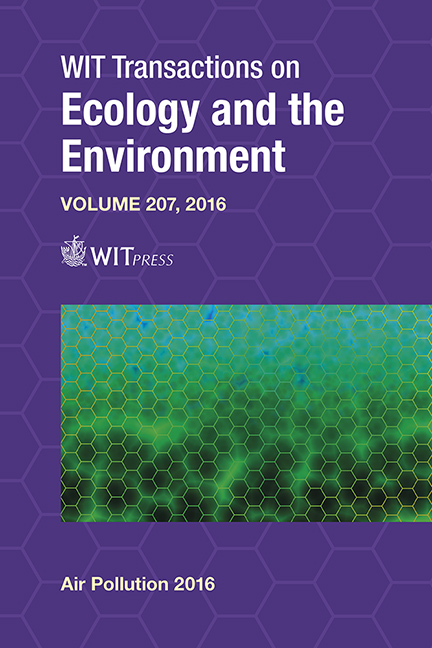Diffusive Sampling Of Air Pollutants In US Basins With Oil And Gas Development
Price
Free (open access)
Transaction
Volume
207
Pages
12
Page Range
145 - 156
Published
2016
Size
1,234 kb
Paper DOI
10.2495/AIR160141
Copyright
WIT Press
Author(s)
R. A. Field, A. Ramirez, J. Quintanilla, A. Cabrerizo, P. Pérez Ballesta
Abstract
Emissions from the oil and gas sector are important for climate change, ozone production and human health. Oil and gas leakage rates reported in the United States (US), estimated by relating measured methane fluxes with natural gas production, vary from less than 1% (e.g. Upper Green River Basin, (UGRB) in Wyoming) to over 6% (Uintah Basin, Utah). We demonstrate the applicability of the Pocket Diffusive (POD) sampler for scoping assessments of levels hydrocarbons and volatile polycyclic aromatic hydrocarbons (PAH) in areas heavily influenced by existing O&G development. We assess three US basins (Upper Green River, Uintah, and North Platte River), each with different characteristics, most importantly meteorology and emissions, which influence measured air quality. We contrast ambient concentrations of hydrocarbons (C4-C12) and volatile PAHs at these basins and show important differences between measured levels of pollutants, including benzene. Our POD sampling results support previous findings of relatively elevated levels of aromatics in the Pinedale Anticline (UGRB) and relatively high alkane concentrations in the Uintah Basin. Concentrations of alkenes and PAH shows that these compound classes are at relatively low levels, and as such are of less concern in the assessed basins.
Keywords
oil and gas, hydrocarbons, diffusive sampling





